A Guide To Chess Improvement, or How I Achieved 2100
Prologue
Hello Chess Friends! This is an article I’ve been working on for a while. This may, in fact, still be a work in progress because I have plans of reaching higher ratings in the future, and perhaps, I’ll continue adding to this as an indefinite infinite sort of work where I put key notes of what I learned, etc.
But, here I split this article into multiple chapters:
Introduction (Where I introduce some learners of chess and chess coaches who impart famous wisdom, etc)
Key Steps To Improvement. (Where I introduce the various key steps to improving your chess)
Training Plan (And steps of how to stick with it/winning chess psychology)
Training Resources (Key training resources that got me to 2100 chess.com and 2100 lichess.com, and a link to further sources if interested)
Book Recommendations (Things that only masters commit to doing, and maybe you will find helpful as well, but also a variety of books for beginners as well)
Conclusion (Where I end this article on a maybe sorrowful note)
Introduction
Chess is only as hard as one makes it out to be. Someone spending three years playing chess in a park will be surprised to see a child reading chess books to be twice as proficient.
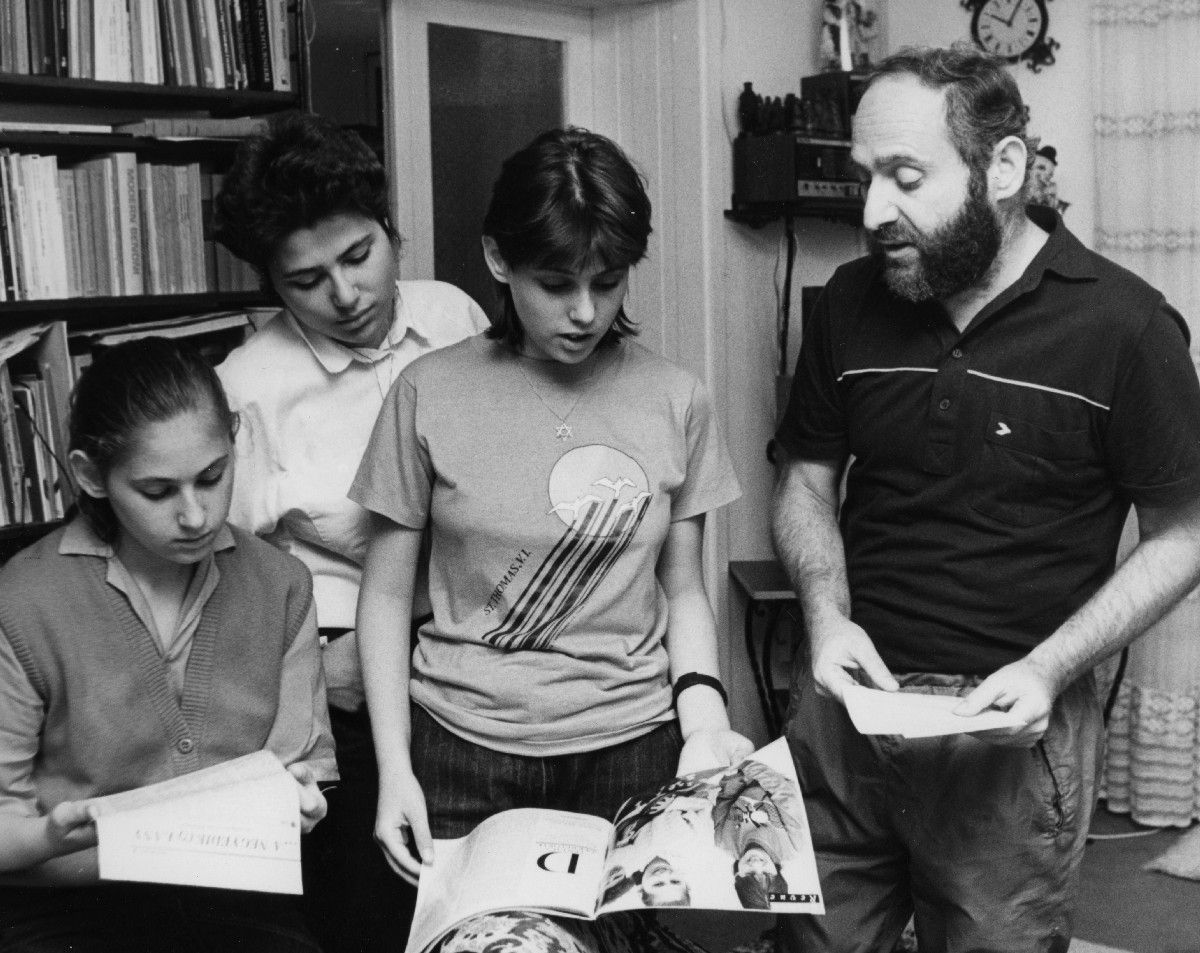
Laszlo Polgar knew that geniuses are made, not born and those geniuses studied intensively and started at a young age. With this knowledge, he concluded that "any healthy newborn" could be turned into a "genius".
The experiment began in 1970, often there were detractors, people complaining about a lack of real education for the children. Their house was described as cluttered with books, lined with sketches of chess scenes and full of thousands of chess books, trophies, and boards cluttering the living room, and a file card system including the records of previous games.
An early sign of success came from Susan Polgar, who began playing chess at four years old, after six months of training, she beat veteran players with ease, and dominated the girls under age 11 tournament with a perfect score. And, it was not a matter of forcing them, they wanted to play chess, learning chess was a natural thing, and they all wanted to play. Susan Polgar became the Women's World Chess Champion, and Sofia and Judit Polgar both became the best and second-best female chess players in the world.
This is a story that I read about three or four years ago. Motivation is the key to success.
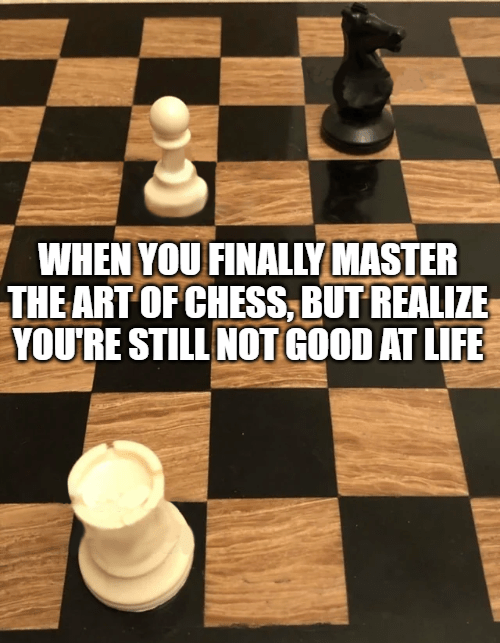
The secret to success in a field is motivation, a positive, goal-focused mindset, with steady focus. Acknowledge the various factors in your life, set certain times when you feel like you spend less time in reality, and use it to study chess!
For chess players, the key to improvement was never IQ or memory (although it keenly helps, it isn’t amazingly helpful). The want/need to study chess continuously, to improve quickly, is a trait of all modern world champions, modern Grandmasters, and moderately strong club players. Any person who follows a Soviet School sort of rigor will always have a chance to get a title. Study hard, and the rewards will follow.
I have put a lot of effort into my journey toward 2100. It took a lot of dedication and grinding, and I worked smart as well as hard. I spent about an hour on chess just playing games, and analyzing games, but also played slow games (which helped me improve significantly). Playing games itself isn’t always the way to improve as well though. I also read chess books and watched as much as I could about chess, for a good grasp of it.
I only really started playing chess about a year and a half ago although my account was made about 5 years ago. I started as a 100, with barely any grasp of chess as a whole.
My Own Chess Road
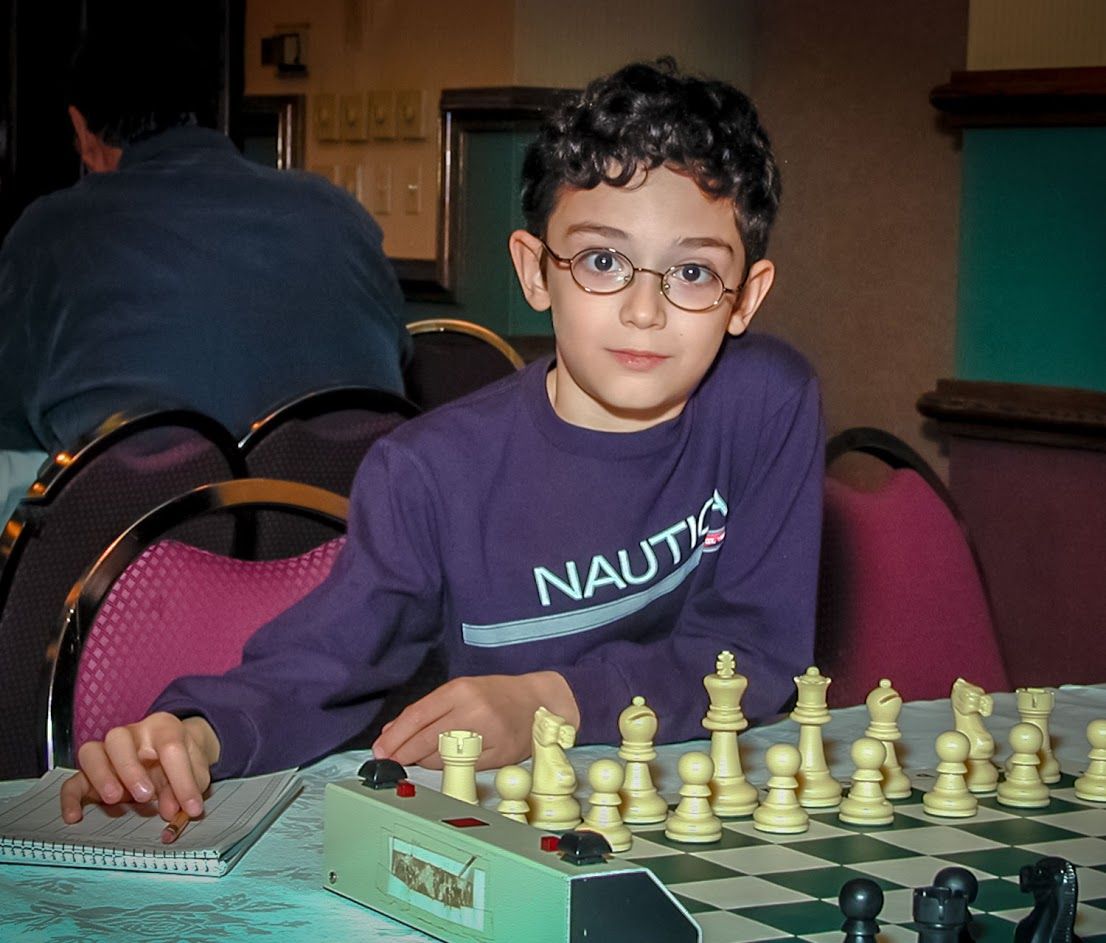
During elementary school, I joined my school’s chess club. It was a very strange and interesting day because I had never played chess before and I didn’t know how to play chess. My first results were bad, I was crushed by the person who taught me only the basic concepts, like how the pieces moved. I didn’t even know what stalemate, checkmate, tactics, etc were. I would continue to lose and would never pay attention to the man who taught us all of those new and interesting concepts. Overall though, it was a fun experience. I remember receiving two trophies for attending and playing my friend, who I beat with a mate on the back rank.
Years later, I would continue to lose to whomever I played. I played against kids and would be easily crushed. I began to play on chess.com, but I continued to lose every game (except only once, but they were 300s).
My conceptual thinking toward chess was alien. I would think of these creative thoughts, but they were all wrong. I didn’t even know how to castle, or what the basic rules toward castling were.
Around two years ago, in the summer of 2021, I was badly beaten by a friend of mine at chess and wanted revenge. After summer school and during summer school, I would play chess against bots and learn the rules of chess by reading chess books. I installed an app where I could play bots against and learned concepts like Taking control of the center, Fianchettoed bishops, and basic opening principles. I relearned the rules through Lichess and learned what En Passant is.
I played a couple of games every day during class, which was a boring hodgepodge of making presentations and websites. I would play classical against random people online. After about a week, I got to 600. I began noticing mistakes in my play. When I blundered pieces, I would say “What am I doing” in my head, or out loud, really loudly. I began watching Nakamura destroy these 600s, and I would say, what am I doing wrong?
By the time school began, I was 900 on chess.com. Chess Club was close to starting, and I was new and unfamiliar with the world. I began playing on Lichess in school because chess.com was blocked.
One day, while I was playing chess, a random Chinese kid (not @road2nationalmaster) came up to me and started asking me about chess. He kibitzed for me in the game, and somehow... We lost because I was down a queen and he and I were both around the same level. Apparently, he wanted to join a chess club too, and I was confused about the same thing. He was friendly and we talked a lot about chess. It was the first positive experience I’d ever had about chess.
When Chess Club began, I was introduced to everybody. They were all very good, some were horrible, and some were just god awful and refused to interact.

Yet, somehow, Chess Club was also very fun at the same time. I would play against random people, get defeated, and jump back again, with newfound knowledge, defeating them. I began playing chess whenever I could. During lunch, during the beginning of class. I began playing on the school account, doing chess lessons but also doing tactics/puzzle rush nearly every day. I installed a daily chess extension on my Chromebook. In the morning, I would play chess, do puzzles, and so on.
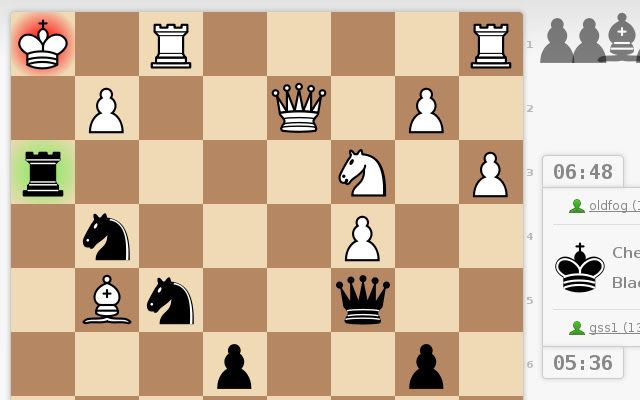
But even so, after I got to the point where I could beat my friend with ease. I somehow got addicted to chess. I was motivated by losses and saw weaknesses in my play compared to stronger players, and I wanted to apply myself.
I began to improve steadily. From August and then on forth, I gained about 200 rating points with ease. But my improvement didn’t stop there. In October I gained 200 rating points, November I gained 300 rating points, December I gained 200 points, and between January and February I gained about 100 rating points, in March and April I gained another 100 rating points, in November I gained another 100 rating points, December-January I gained 164 rating points.

In February-ish, I met @road2nationalmaster online through his private message to the school chess account. I got to meet him online through the classroom. After about a month, we met physically, and we played OTB quite a lot over the summer and spring.
Maybe I will keep expanding my knowledge.
Who knows? The only thing that has been preventing me from gaining a higher rating on chess.com is my dedication to the sport. Perhaps, when I have time during the summer, I can study chess once again. Maybe, I’ll attend chess coaching sessions.
The problem with my chess improvement was it was not fast enough to call my dedication worthwhile. The effort I put into improving my chess was all from playing extreme amounts of rapid, blitz, and bullet per day. It was not from learning new things every day. My endgame accuracy is still a bucket of fish(that is to say, utterly garbage), my sense of planning and positional play is weak, and I need to improve on tactics.
But, perhaps, I can show you some essential steps to prevent mishaps in my chess education.
Key Steps To Improvement
Chess is a game of strategy, tactics, and skill. It is a game that can be enjoyed by players of all ages and skill levels. However, to become a successful chess player, one must constantly strive to improve their game. Whether you are a beginner or an experienced player, there is always room for improvement. In this introduction, we will discuss some of the ways in which you can improve your chess skills, including practicing regularly, studying the game, and seeking guidance from more experienced players. By implementing these strategies, you can take your chess game to the next level. Whether your goal is to win more games, beat stronger opponents, or just enjoy the game more, improvement in chess is possible for everyone.
For Beginners (100-1000)

Here are some simple steps of improvement for those stuck under 1000 or stuck at 1000. Following these simple steps should get you a basic understanding of all the fundamentals and how you should play.
1. Study basic tactics such as forks, pins, and skewers.
2. Learn and practice basic endgame techniques such as pawn promotion and king and pawn endgames.
3. Analyze your games to identify mistakes and areas for improvement.
4. Study and learn common openings and their plans and ideas.
5. Regularly play against stronger opponents to test and improve your skills.
6. Review grandmaster games and try to understand the thought process behind their moves.
7. Take chess lessons from a coach or use chess-specific training software.
8. Read chess books and articles to learn new strategies and ideas.
9. Practice visualization and calculation to improve your ability to see several moves ahead.
10. Keep your chess study varied and don't get into a rut, try to challenge yourself constantly.
An example of using these methods to improve is through analysis of one's own games. Always check the engine for mistakes and you will always benefit.
A game I played as a 600
Here, I noticed that I blundered a tactic that won a piece for white, and played some of the worst moves in the position. Using chess.com analysis, I replayed the tactics that I missed and improved quite a lot. Analyzing games, replaying tactics, and learning new things will help you propel yourself out of the 100-1000 range.
For Intermediate Players (1000-1600)
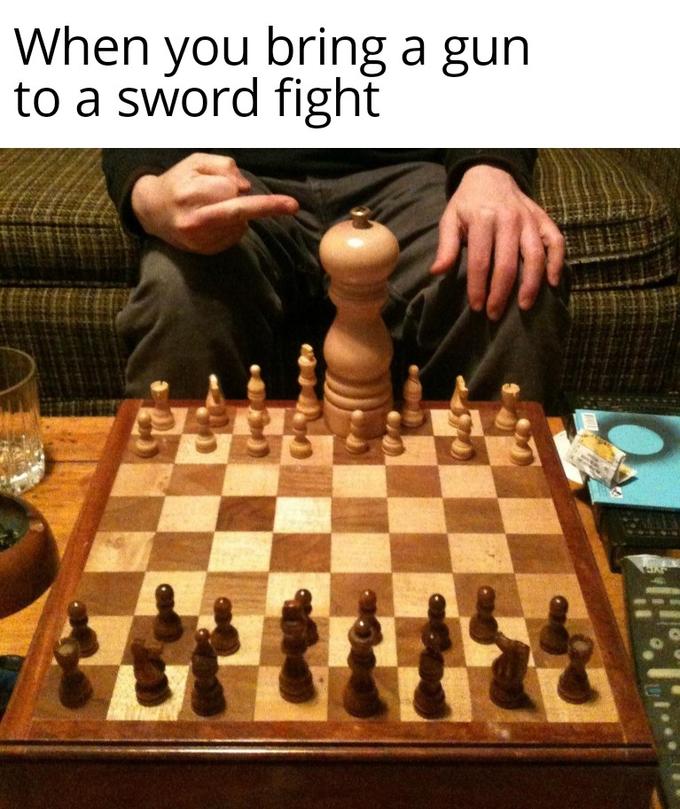
1. Play actively and try to put pressure on your opponent's position. This means making moves that challenge their pieces and limit their options.
2. Learn and understand advanced chess concepts such as outposts, pawn structure, and space advantage.
3. Pay attention to the pawn structure and try to create passed pawns.
4. Learn and master different endgame techniques such as king and pawn endgames, rook endgames, and minor piece endgames.
5. Be able to recognize when you have a winning or a losing position and try to convert it into a win or draw respectively.
6. Try to create threats and force your opponent to react to them.
7. Try to create weaknesses in your opponent's position and then exploit them.
8. Try to play prophylactically, anticipating your opponent's threats and neutralizing them.
9. Learn how to play with a minimal material advantage, it will help you to convert small advantages into wins.
10. Study the games of top-level players to learn from their strategies and tactics.
A game I played as a 1700-rated player
For Relatively High-Level Players (2000 and beyond)

1. Play with a deep understanding of chess strategy and tactics. This means understanding the underlying principles of chess and how they apply to your games.
2. Be able to think several moves ahead, and try to plan out your strategies in advance.
3. Learn and master different openings, and be able to play both sides of them.
4. Be able to play with a wide range of pawn structures and positions.
5. Learn and understand advanced endgame techniques such as the Lucena and Philidor positions.
6. Be able to recognize and create imbalances in the position, and then use them to your advantage.
7. Learn how to play with a minimal material advantage, it will help you to convert small advantages into wins.
8. Study the games of top-level players to learn from their strategies and tactics.
9. Focus on improving your calculation skills, it will help you to find the best moves in complex positions.
10. Try to keep your mind fresh during the game, and avoid getting into a rut by looking at different positions and different types of games.
11. Learn how to play with opposite-colored bishops, it will help you to play with small material advantages.
12. Be able to play with a wide range of time controls, including rapid and blitz chess, as well as classical time controls.
13. Continuously analyze your games and try to identify your weaknesses, and work on improving them.
A game I played as a 2100-rated player
Using The 1% rule to improve at chess

These tips might not help, and this is why the 1% rule is here to help guide the undeveloped and lost. With the 1% rule, you can become twice as good at anything in just over two months. Six times better in half a year, and 37 times better in one year.
It’s called the 1% rule because it requires that you get 1% daily at a skill. I first heard of this idea from NM Nelson Lopez from a youtube video about improvement. But I put my twist on it.
For the 1% rule, I’d recommend spending time on what you love(which is chess, or not 🙁), for a few minutes every day, either by practicing it or learning about it. Even 5-10 minutes every day can help one improve by significant jumps.
To follow this rule avidly, never aim for the moon, only short periods of practice for the beginning, and the aim is to create a habit. A habit of playing long classical games at 6:30 p.m. every night and analyzing them before bed; practicing a few tactics while waiting for the bus; and listening to a game analysis of the latest games on Tata Steel. Anything can help when you study it for periods.
Before you begin to journey this road, pave the road. So, you will need multiple training resources beforehand, which I’ve included in this article as well, and you can find them if you scroll down a bit.
Training Plan

I’ve found seven simple key trainable factors to improve at chess.
Tactics
Calculation
Visualization
Openings
Evaluation
Endgames
Strategy
Three basic things that help to improve Tactics, Calculation, Visualization, Evaluation, Strategy, and (maybe endgames) are puzzles on chess.com or lichess.org. You can calculate the various variations, see it all in your head, give a proper evaluation of the position from first glance, and also determine the best placement of the pieces to win material/get a better position. Unfortunately, something like openings has to be memorized and understood.
1. Tactics: Tactics refer to the ability to find and execute short-term combinations and threats on the chessboard. To train tactics, one can practice solving chess puzzles and exercises, reviewing games of strong players for tactical patterns, and studying classic tactical motifs such as forks, pins, and discovered attacks.
2. Calculation: Calculation refers to the ability to analyze and predict the potential outcomes of different moves and positions. To train calculation, one can practice analyzing positions and variations, reviewing games of strong players for deep calculations, and studying endgame and theoretical positions.
3. Visualization: Visualization refers to the ability to see and imagine the potential of different moves and positions. To train visualization, one can practice visualizing positions and variations, reviewing games of strong players for visualization skills, and studying endgame and theoretical positions.
4. Openings: Openings refer to the first few moves of a chess game and the strategies and ideas behind them. To train openings, one can study openings by studying opening books and databases, reviewing games of strong players, and playing through openings to gain a deeper understanding of the underlying principles.
5. Evaluation: Evaluation refers to the ability to assess the relative strength of different positions and plans. To train evaluation, one can practice evaluating positions and variations, reviewing games of strong players for evaluation skills, and studying endgame and theoretical positions.
6. Endgames: Endgames refer to the final stages of a chess game when there are few pieces left on the board. To train endgames, one can study endgame books and databases, review games of strong players, and play through endgame positions to gain a deeper understanding of the underlying principles.
7. Strategy: Strategy refers to the overall plan and ideas behind a chess game. To train strategy, one can study strategy books and databases, review games of strong players, and play through different types of positions to gain a deeper understanding of the underlying principles.
Let's train each of these concepts by analyzing a master game:
Fully analyze this position to its fullest and evaluate the position.
Right now, white has three kingside pieces. All of his pieces are on very active squares. White has many advantages, kingside space, and a kingside attack. His pieces are all coordinated on the kingside. If Black is given time, he can equalize if white is not careful. With Qd8 to prevent any ideas, maybe protect the weakened c4 pawn with moves like b5, and then trade off the light squares bishop on g2. If black could get in h6 in time also, this would also be to black's advantage because then white has no ideas of h5 and so forth.
Let the ideas flow to you, evaluate every minor piece, and train your mind to spot these tiny things in the position.
Here Fischer played something that changed the course of the game, try to find it here:
| Base Work | |
| Day 1 | Blog your study plan Check daily game Play two 15+10 games Analyze one game (level 3) |
| Day 2 | Check daily game Play four 3+0 games Analyze games (level 2) 20 minutes of tactics |
| Day 3 | Check daily game Play two 15+10 games Analyze one game (level 3) |
| Day 4 | Check daily game Play a 15+10 game Analyze the game (level 3) 20 minutes of endgames |
| Day 5 | Check daily game Play a 15+10 game Analyze the game (level 3) |
| Day 6 | Check daily game Start Yusupov Chapter 1 |
| Day 7 | Check daily game Finish Yusupov Chapter 20+ mins of Woodpecker tactics |
Training Materials
Chess Learning
- Chessable
- Simplify Chess
- Li Study
- Chess Factor
- Chess.com Lessons
- Chess Fundamentals
- John Bartholomew
- Saint Louis Chess Club
- Climbing The Rating Ladder
Game Analysis
Chess Training
- Chess Tempo
- Chess Puzzle
- Tactical Chess
- Tactics Generator
- Chess Cup
- Chess Endgame Trainer
- Blitz Tactics
- Chessercise
- Chess Training App
Resources
Additional Resources For Chess On Reddit
Complex Ways Of Studying Chess
For the more “advanced players”, I would recommend a lot of books/ways of training from a lot of Danya videos, and a lot of personal experience.
Grandmaster Preparation
1. First off, the series Grandmaster Preparation by Jacob Aagaard is a good way to launch off into the IM level. Hans Niemann, Daniel Naroditsky, and so many other Super Grandmasters use this book to prepare themselves for higher levels, and it provides many advanced concepts that surely 2100s and above can use for themselves.



Here is an example of a position that I took from Grandmaster Preparation: Positional Play

Lessons With A Grandmaster
2. For people lower-rated (like 1800-2100), I would recommend a starting book like Lessons with a Grandmaster by Boris Gulko, this book is a book about self-analysis of games, and comparatively the ideas of a Grandmaster compared to the ideas of a beginner. The games should be steadily straightforward to read, and cover a lot of advanced positional concepts and patterns.
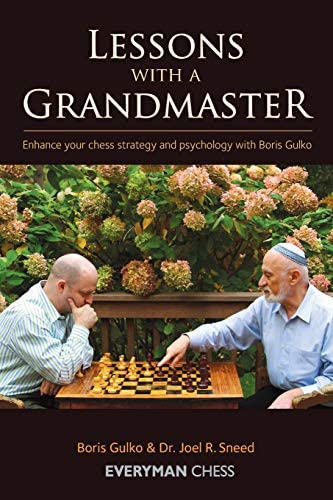

Here's an example of a game that I took from Lessons With A Grandmaster, fully annotated with Gulko's thoughts and analysis of the game, with the amateur:
Reassess Your Chess
3. For those who want to get straight into chess and “reassess their chess”, get Reassess Your Chess by Jeremy Silman, this book teaches a lot of the essential stuff about minor piece activity, plans in a position, and provides a way to properly evaluate your position. This book probably helped me the most in getting to the level that I am at now.


Here is an example of a position that I took from How To Reassess Your Chess:
Selesniev-Alekhine, Triberg 1921
"A look at the diagram gives one a very favorable impression of White's chances. His Bishops and Queen aim menacingly at Black's kingside, he has a central space advantage, and he can eventually play for a central break via f2-f4, e2-e4, and e4-e5. The queenside is in a state of balance though, to be honest, Black's a5 pawn is under more pressure than either of White's on c4 and a4. As I said earlier, it looks bleak for Black-we could not find one favorable thing for Black to play with.
With this in mind, Alekhine realized that he had to create a favorable imbalance or he would most likely lose the game. Extreme measures are called for, so: 1...Rb4!! Hanging his Rook to White's Bishop! If White does not take it, Black will play 2... Rfb8 and 3...Rb2 with active play. 2.Bxb4 cxb4! Inferior is 2...axb4. By capturing with the c-pawn, Black creates instant pressure on White's c4 pawn and a fine support point for the Knight on c5. Add to this Black's strong passed pawn on b4 and increased King safety due to the absence of White's dark-squared Bishop, and you get a dynamic Black position full of potential.
White is now unexpectedly thrown on the defensive, and his only favorable imbalance now is his advantage in material. Unfortunately, his material advantage is made up of Rook vs. Bishop; but the White Rooks have no open file for activity.
Hopefully, this list of favorable imbalances will override the student's materialistic prejudices and make him realize the importance of giving oneself something (an imbalance or the creation of one) to use. 3.Nd2! An excellent move. White will blockade Black's b4 pawn with that finest of blockaders, the Knight. 3...Nc5? A big mistake that loses a lot of time. Black should have increased the pressure on White's c4 pawn by ... Rc8 followed perhaps by ...Nb6. 4.Nb3! Another fine reply. White is willing to give back the material to retake the initiative. 4...Nd7 A sad retreat, but 4...Nxa4 5.Ra1! Bxa1 6.Rxal Nc5 7.Nxa5 Kg7 8.Nc6 favors White. 5.c5!
Very sharp. White gives away a pawn but creates some favorable imbalances for himself, namely the trade of his bad Bishop on d3 plus the loss of his target pawn which was on c4. Soon Black's pawn will be on c5 and will be weak and in need of defense. Note how both players are not so much interested in the material as they are in the creation of favorable imbalances. 5...Bxd3 6.exd3! White happily doubles his own pawns. The idea of this move is to control c4 so that after ...dxc5 Black's c5 pawn will not be able to advance. Furthermore, now White has an open e-file to use for his Rooks, and, as a result, he can put pressure on Black's weak e-pawn. 6...dxc5 7.Rfe1 Now White has a material advantage plus pressure against c5 and e7. Black eventually won a long battle, but this position favors White."
4. For those who are just starting chess, I recommend Chess For Dummies, because the book is for dummies, and anybody who is 100 is a bit of a dummy 🙁. This book covers everything, outposts, squares, puzzles, how to train, how to improve, and getting ready for OTB play. Although it’s not that advanced, it’s pretty fun to read, and I would totally recommend it to people otherwise oblivious to chess.
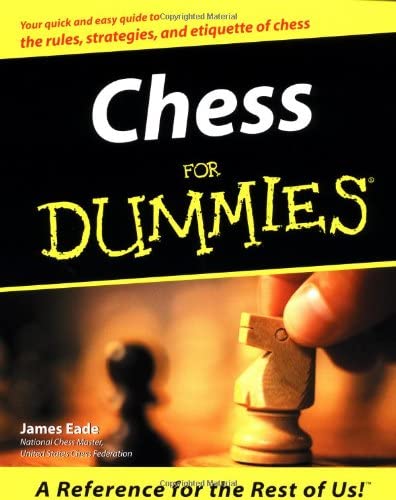
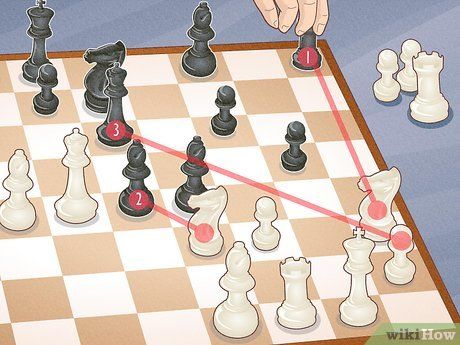
Here is an example of a position that I took from this book:
Capture the piece in one move.
"Woah, free queen! Get back to work and finish reading this bookThe WikiHow
For people who have been 100 for their whole lives, I'd recommend this: https://www.wikihow.com/Play-Chess-for-Beginners
Here is an example of a position that I took from this article:
Castle in one move (Move the piece that has a cross on it).
Improving Through Rigorous Chess Study
For people who want to improve their chess calculation skills with certain variations in mind. Create a chess study and analyze a position from a master game. Get all the possible moves, and variations in your head, play them out on the board (not on an online analysis board), then look for mistakes in your variations, etc. Continue on like this, and you’ll gain a steady practice of mind.
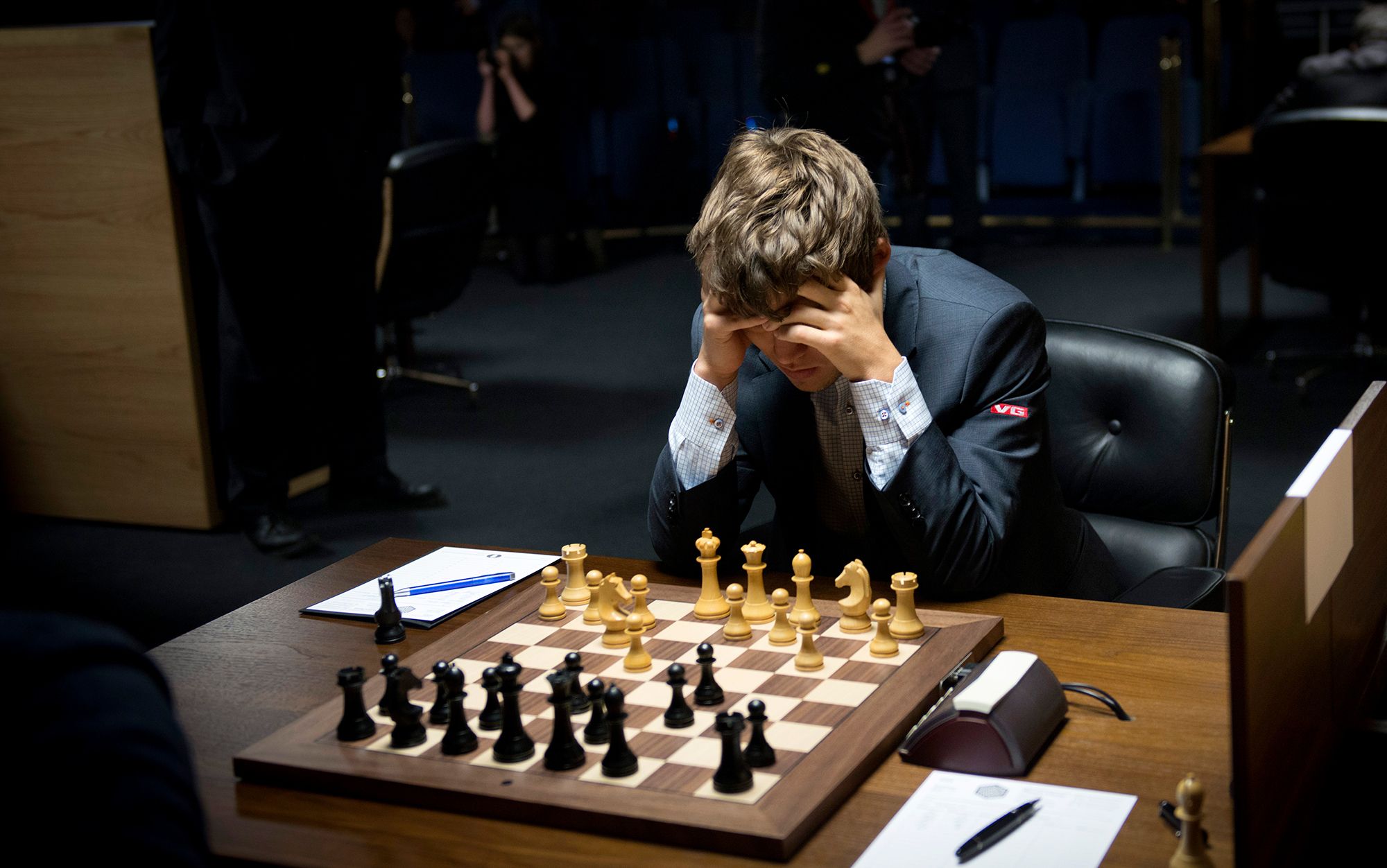
Here is a helpful Danya video explaining how one can practice calculation skills:
Think Like A Grandmaster
A book I would recommend reading to improve calculation is Think Like a Grandmaster by Alexander Kotov. He provides a lot of interesting methods of thinking, which (may seem archaic now, and also some of the analysis is inaccurate according to the engine), but helps, significantly, improve calculation and all sorts.
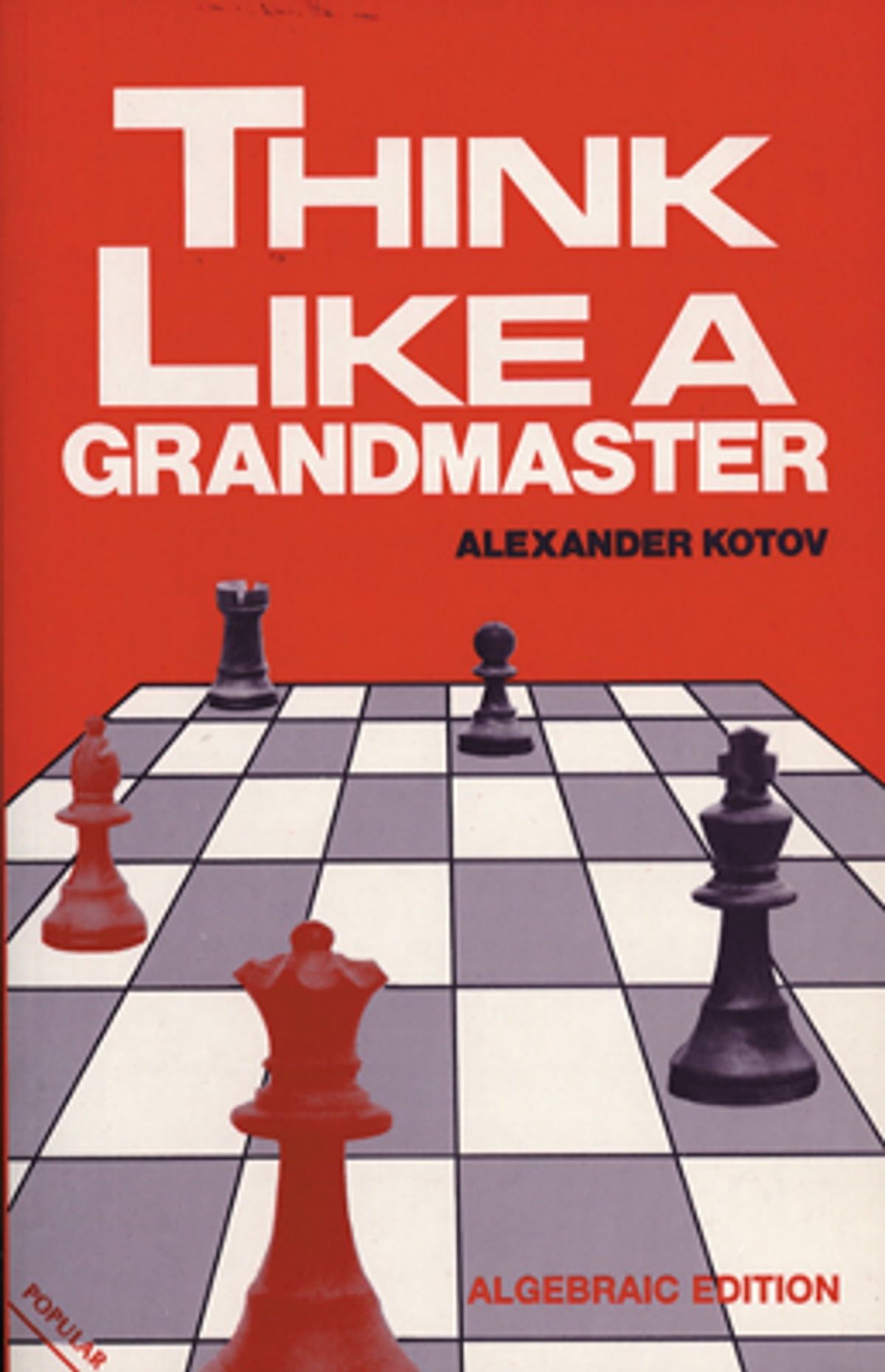

Here are some examples of positions from master games that I took from Think Like a Grandmaster:
Florh-Fine, Hastings 1935,6
"The tension has reached its peak and the outcome can be resolved by the slightest mistake. Grandmaster Flohr did in fact commit such an error by playing the obvious move 24 d8?, which was convincingly refuted by Fine. He retreated his queen to c7, after which he simply won the game, and all White's attempts to attack g7 couldn't hold. Analysts the whole world overanalyzed this position. An idea found by one analyst in one country was quickly refuted in articles published in another. A practically invisible finesse pointed out by one analyst was soon shown to be an error on further examination. Finally, the English master Winter found the one and the only way to win. I had worked out the same line in my own analysis. Look at the variations which arise after move 24...b5. The idea behind the move is not immediately apparent. It is to open the a3-f8 diagonal for the white queen to attack the enemy king. The win after the forced reply 24...Bxa5
25 Nxg7 is proved by the following variations:
1) 25...Kxg7 26 Rg4+ when none of the various replies saves Black:
1a) 26 Kf8 27 Qb4+
1b) 26... Kh6 27 Reg5! and Black cannot meet the two threats of 28 Qe5 and 28 Qe1
1c) 26 Kh8 27 Rxb5 Rg8 28 Rxg8+ Kxg8 29 Rg5+ Kh8! 30 Rf5 Kg7 31 g4 and white must win though not without technical difficulties
1d) 26. Nxg4 27. Rg5+ Kf8 28 Qg7+ Ke7 29. Qxf7+ Kd6 30 Qf4+ with a decisive attack
2) 25... Bxc4 26. Nf5!. This strong move creates mating threats as well as the threat of a family check on e7. Black has various defensive tries but they are all unsatisfactory.
2a) 26... Qc7 27 Rg4+ Kh8 28. Re8+
2b) 26... Kh8 27. Rxc4 followed by Re8+
2c) 26... Rc7 27 Rg4+ Kh8 28. Rxc4 and 29. Re8+
2d) 26... Qa4 (to prevent a queen check on the a3-f8 diagonal) 27 Re8+ Rxe8 28 Rg4+ Kf8 29. Qxf6 and after Black has run out of checks he has no defense against Rg8+
Training exercises of this sort gradually led to an improvement in the accuracy of my analysis, and I was able to penetrate more deeply into the secrets of very complicated positions."
Conclusion

A chess improvement blog can be a valuable resource for players looking to improve their game. It can provide tips, strategies, and advice on how to improve specific areas of play, as well as information on the latest trends and developments in the world of chess. However, it is important to remember that chess is a complex game and there is no single "right" way to improve. Ultimately, the best way to improve your chess skills is to practice regularly, study the game, and seek out guidance from more experienced players.




Comments
Post a Comment